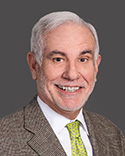In the spirit of the election season, I thought I might step back and take a look at one of the dominant features of campaigns in recent years: the rally. The modern rally differs in many respects from 20th-century precursors, as it does from other forms of political media.
But it in some ways represents a return to much older forms of civic political engagement.
There's plenty of academic research and commentary revealing what gets communicated at rallies. But only recently have observers like Dan Paget begun to consider whether and how a politician's message that is communicated at a rally is different from the message transmitted through other channels. Paget posits, for example, "that what politicians communicate at rallies as 'speakers' may not be the same as what they say via other media."
A good deal of this is explicable in terms of genre: Just as our readerly expectations differ as between a novel and a poem (even though both are literary writing), so it is between a television interview and a rally. With respect to the former (setting aside excessively friendly or hostile interviews), we expect the participants on some sort of studio stage, comfortable chairs, multiple camera shots cutting in and out from different distances and angles, questions and answers (and sometimes evasions and pivots to talking point), and a cold or virtual audience. The same, roughly speaking, can be said of contemporary "debates."
Rallies, by contrast, have a much more fluid form, one congenial to at least some audience interaction. They are of course centered around candidates, but nowadays they are steeped in spectacle, pageantry, and the carnivalesque. Gone are the days when William Jennings Bryan (e.g., his "Cross of Gold" speech) and others of his ilk could hold an audience's rapt attention without much apparatus at all. But in its current form, a political rally is likely to feature music, dance, and celebrity appearances (by actors, musicians, or business tycoons), all designed to both entertain and reflect glory onto the candidate du jour.
There are several points of entry into the study of rallies, and I want to touch on three potential avenues, each of which considers a particular aspect that appears on the surface of almost any contemporary political rally.
The Marxist critical theorist Guy Debord argued that, by the time he was writing in the 1960s, "the spectacle represents the dominant model of life." And although "the spectacle presents itself simultaneously as society itself, as part of society, an as a means of unification ... it is in reality the domain of delusion and false consciousness." We can easily see that the contemporary political rally, while ostensibly unifying the electorate, is merely hardening the breech between opposing parties-what Debord saw as "universal separation."
In an adjacent vein, Mikhail Bakhtin, a philosopher and literary critic, found in the writings of Dostoevsky and Rabelais echoes of the great carnivals of medieval Europe. These carnivals brought together people who rarely mixed into a physical situation and psychological state in which inappropriate-and even profane-behavior was celebrated. As Bakhtin put it, the carnival state of mind "is opposed to that one-sided and gloomy official seriousness which is dogmatic and hostile to evolution and change, which seeks to absolutize a given condition of existence or a given social order." And as we see in almost every current rally, the pervading theme is the need for "change."
As the Renaissance scholar David Bergeron observes, the English civic pageant-for example, Queen Elizabeth's royal entry pageant as she moved from the Tower through the streets of London-was a form pregnant with meaning. Those pageants depended on the presence of the sovereign, but I think the presence of candidates serves the same ends vis-Ã -vis a rally: the candidate "constitutes the reason for the dramatic representation, and he or she may be represented within the street drama."
Ben Jonson, roughly a contemporary of Shakespeare, remarked of court masques that "all representations, especially those of this nature in court, public spectacles, either have been or ought to be the mirror of man's life, whose ends ... ought always to carry a mixture of profit with them no less than delight." From this, Bergeron suggests that "representation as mirror certainly characterizes much of civic pageantry, a street theatre that also mixes profit and delight." So there, so with rallies, although "echo chamber" rather than mirror may be the more fitting metaphor today.
Francis Bacon defined drama as "history made visible." Bergeron suggests that Bacon unintentionally gave "a superb definition of representation in civic pageants," which I think we can usefully extend to contemporary political rallies. These rallies, like the civic pageants, "exist as products of their culture, even as they help produce that culture."
Reprinted with permission from © ALM Media Properties LLC. All rights reserved.








